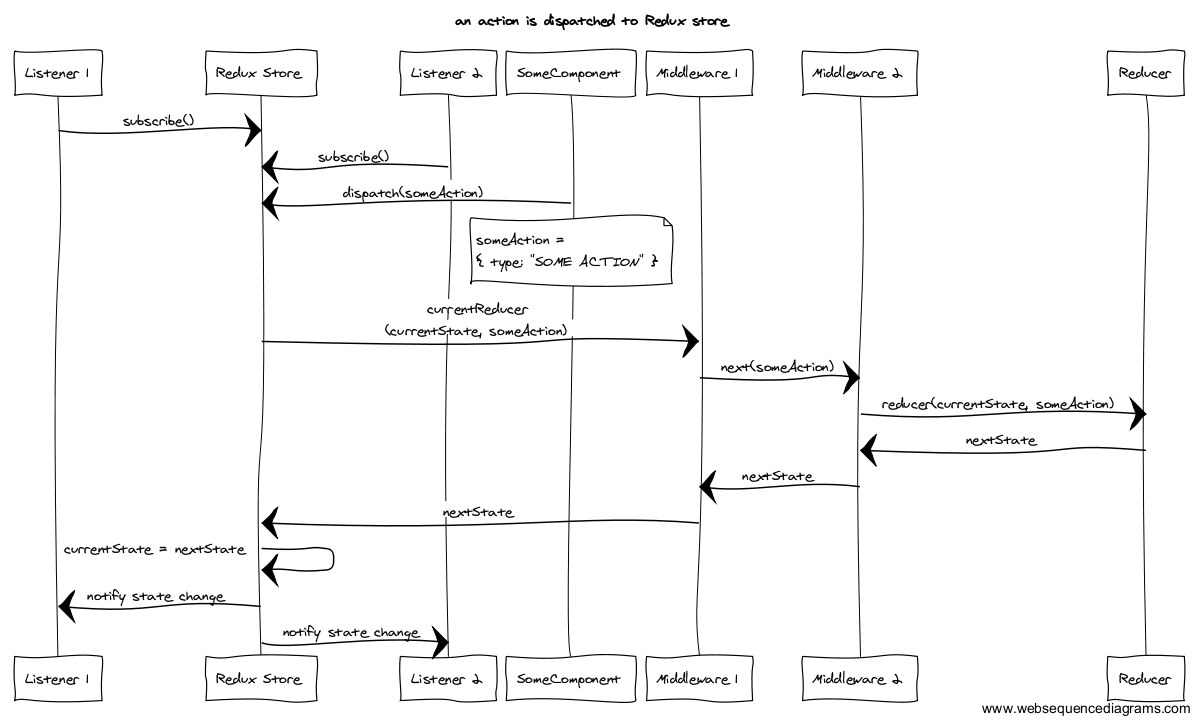

- REDUX STORE HOW TO
- REDUX STORE UPDATE
REDUX STORE UPDATE
When components are connected to the state, an update to the state causes those components to re-render.
State: The state is the place where the data lives. The reducer receives an action and manipulates the state based on the action type and the payload. Reducers: Reducers are the only means by which one can update the Redux store. When an action is triggered inside a component, it is sent to the reducer through a dispatcher. Redux actions are functions which are sent from the UI components. The type defines the type of action that is sent to the reducer and the payload is the data that the reducers uses to update the store. Actions: A Redux action has a type and a payload. It serves as a centralized store for state that needs to be used across your entire application, with rules ensuring that the state can only be updated in a predictable fashion. Redux is a pattern and library for managing and updating application state, using events called “actions”. When used in an application, Redux is able to manage state and data flow within the application very efficiently. This however, does not undermine the power of redux. You can build a fully fledged, very performant react application without Redux. It only becomes necessary when your application needs it. On the contrary, Redux is not a MUST for building react applications. Redux is so popular that sometimes people see it as a necessity for building react applications. One very popular library among these is “Redux”. Over the years, many libraries have been developed to fulfill this purpose. This makes it quite difficult when choosing the best approach for state management. Generally, as your application grows bigger, the effort needed to manage state and consistent data also increases. In managing data, one needs to ensure that the data flowing through the application is consistent, accurate, and has a single source of truth. However, there are best practices to consider when building applications for production. There is no one-stop approach to doing this. One important aspect of modern Single Page Applications(SPAs) is managing data within the application and making data available at different parts of the application. The advent of single-page applications has popularized terms such as “state management.” However, if you are already familiar with how redux works, skip to “Use Redux toolkit instead of the core Redux.” This article gives an overview of using Redux in your applications and why you should not use the core redux package. When using the Redux toolkit, you’re using Redux that has been made more efficient. It encompasses all the features of Redux with extra capabilities. Redux Toolkit is a great tool that has finally taken over the core Redux. You can now take it from here.In this Writer’s Room blog, Andela Community Member Ebenezer Adjei explores the new and improved Redux – Redux Toolkit – and its capabilities for the future of State Management! It serves forĪll of your form components, so you only have to pass it once. ToĮnable this, we need to pass the formReducer to your store. REDUX STORE HOW TO
The store should know how to handle actions coming from the form components. Basic Usage Guide # Step 1 of 4: Form reducer # Handlers, various properties and action creators. With redux-form comes a lot more: hooks for validation and formatting Same goes for any other interaction like filling the input, changing its state The state is then passed back to the input.

formReducer updates the corresponding state slice,.There is one text input inside, wrapped with. Yourself, as they're already bound to dispatch for certain actions. The diagram below represents the simplified data flow. It's important to understand their responsibilities:įunction that tells how to update the Redux store based on changes coming from the application those changes are described by Redux actionsįunction that takes configuration object and returns a new function use it to wrap your form component and bind user interaction to dispatch of Redux actionsĬomponent that lives inside your wrapped form component use it to connect the input components to the redux-form logic To connect your React form components to your Redux store you'll need the following It, it's recommended to have basic knowledge on: The basic implementation of redux-form is simple.






 0 kommentar(er)
0 kommentar(er)
